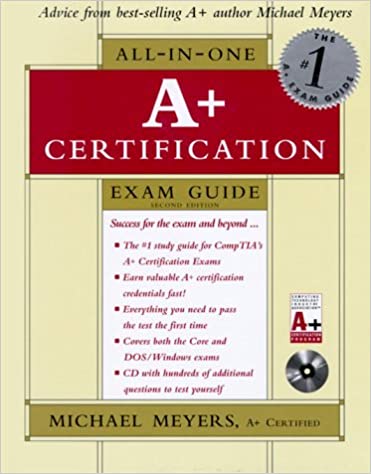Picture it, suburbia, nineteen ninety eight.
Mike is a senior in High School and a new teacher has convinced the technical specialization wing to include an A+ Certification course. Mike takes full advantage.
This post is part 1 of a 5-part series on Mike’s certification history.
- A+ in the ’90s
- CISSP in 2012
- PMP in 2014
- CKA in 2021
- CKS in the future
These are not meant to be instructive or helpful in any way in terms of achieving the certifications. They’re simply an account of my deciding to become certified and how I got it done.
For the record, I have never tried any other certifications.
Collecting the knowledge to be tested
I spent most of my middle and high school years PC gaming before it was particularly easy. Go to the computer show, buy some parts, incompatibility galore, go to Microcenter and get some different parts, some of those work so the computer runs. What are all these extra screws?
The social scene for nerds at the time featured LAN parties as well, so my friends and I would drag our computers around to each other’s houses and setup things.
The IRC scene had some friendly trivia bots that would ask questions about techy topics like what different acronyms and initialisms meant. I got good at touch typing and gained a lot of computer hardare trivia from that.
I also worked part time for a dial-up ISP where people would call in with their broken computers and I’d patiently explain that if it’s not powered on, the internet isn’t going to work.
I also found out that the database for user accounts had passwords in plaintext, and my boss was a user, and his NT domain password was the same as his dial-in account password, and he was a domain admin. This was before my CISSP and ethics lessons, and even so I didn’t do anything malicious.
My last source of experience was working with my Dad who had a classic engineering role at a news organization which meant he was also responsible for their typewriters in the 80s, computers in the early 90s, and network infrastructure in the late 90s.
Based on the above, I had gathered enough knowledge to pass the test since it was about computer parts names, and purposes and such.
Testing strategy
This class in high school tried to expose us to the same knowledge but in a low-stakes way with a lot of classic troublemaker types. It was a fun year to say the least and when the teacher said “if you get the exam, you get an automatic ‘A’ in the course since that’s the whole point” I decided that I’d drag it out a bit. If I passed the exam in the first few weeks, the teacher wouldn’t be able to take any credit and I’d probably have to find something else to do.
Part of the class was about test strategy which actually did come in handy. This was my first introduction to the concept that it doesn’t matter how wrong a certifying body is, or how much nuance they ignore. They have official answers and those answers need to be regurgitated effectively. Disagreement isn’t for testing time.
This applied to a lot of the OCI layer topics which are squishy at best and some of the technology specific questions that were outdated.
Another tidbit was the multiple choice question breakdown where they had 4 answers, 1 one each:
- very wrong
- somewhat plausible
- almost correct with a minor detail wrong
- correct
This made it really easy to get every question down to a 50/50 guess at worst since one of the two answers that were most similar was guaranteed to be the right one. Then it was just scrutinizing the difference between them and picking correctly.
Test day
Armed with those things and after patiently waiting until Q3 (so I could retake if it didn’t go well), I signed up for the exam. The teacher actually drove me there and was moral support and all.
I Passed!
I think of the dozen or so kids, me and one other passed that year. I don’t know how many took it or how long the class lasted.
Follow-on activities
I never even knew there was maintenance for keeping the A Plus up to date and it lapsed as soon as the initial timer ran out. I used it on my resume for a decade.
My next exam was the CISSP.
